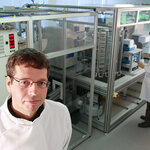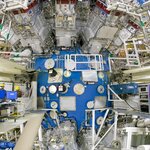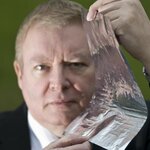Technology

One more book to pile on my to-read list. Via Carl Zimmer (go follow the link for a bloggingheads video interview), a fascinating book on bioengineering, Learning to Fly, by Rob Carlson, is coming out this fall.
He has some insightful thoughts:
Explicit “hands on” molecular manipulation of genomes began only in the mid-1970s, and we are still learning the ropes. Most genetically modified systems do not yet work entirely as planned. Biological engineering as practiced today proceeds by fits and starts, and most products on the market today result from a process that remains dominated by trial…

A new, simpler programming language for wireless sensor networks, written with the novice programmer in mind, can be used by geologists for monitoring volcanoes and biologists who rely on them to understand birds' nesting behaviors.Finding an embedded systems expert to program a sensor network is difficult and costly and can lead to errors because the person using the network is not the person programming it. The cost and disconnect associated with the situation means these networks aren't being used to their full potential.
Lan Bai, U-M doctoral student in electrical engineering and…

ATLANTA and PARIS, April 6 /PRNewswire/ --
- Digital Element's IP Intelligence Helps European Seismological Organization Accurately Identify Affected Locations in Less Than 10 Minutes
By tracking the number of hits to its website after an earthquake, the European-Mediterranean Seismological Centre (EMSC) (http://www.emsc-csem.org/), based in Arpajon, France, can accurately measure the impact of the event, in near real time. EMSC is using Digital Element's IP (http://www.digital-element.net/) Intelligence technology (http://www.digital-element.net/our_technology/our_technology.html) to…

As science fiction plot lines go, the unintended consequences of yielding tasks too complicated or dangerous for human hands to computers and robots is a popular one. Yet real life scientists are increasingly doing just that, creating automated systems and devices that can not only help collect, organize and analyze scientific data, but that are also able to intelligently and independently draw up new hypotheses and approaches to research based on the data they receive.
Writing in Science, David Waltz of the Center for Computational Learning Systems at Columbia University and Bruce G.…

If you're a Muslim and you're worried that debating your NCAA March Madness championship tie-breaker scenarios at work will cause you to miss a prayer time ... well, okay, you're not doing that because designing technological devices for religious use is very different from designing devices for other uses, like the office, where everyone talks about sports.
"Efficiency and productivity tend to be driving forces when designing technology for offices, but these are not as central when designing applications for the home or religious settings. Why would you design a device that makes someone…

On March 30th, Josh Witten told us about a new site, The Jenny McCarthy Body Count. He's apparently not a fan of Jenny, no matter what she looks like. I am not sure I understand that kind of thinking but whatever...
On April 2nd, uber-blogger of Discover Phil Plait/Bad Astronomer tackled the same issue.
On April 3rd, Scienceblogs pageview-whore-whom-we-all-admire PZ Myers/Pharyngula made his feelings known.
Sure, PZ can talk about taking a piss and get more traffic than Josh and Phil combined but someone has to uncover this stuff first. So Josh is clearly the…

Scientists, this is your future research partner. A 'Robot Scientist' named Adam has been created and the group behind it believe it is the first machine to have independently discovered new scientific knowledge. Adam is a computer system that fully automates the scientific process.
The scientists at Aberystwyth University and the University of Cambridge designed Adam to carry out each stage of the scientific process automatically without the need for further human intervention. The robot has discovered simple but new scientific knowledge about the genomics of the baker's yeast…

If we tell you the next laser in the works by the National Nuclear Security Administration (NNSA) will be the size of a football stadium and will have 192 individual beams, each about 40 centimeters square, beaming into a spot about one-half millimeter in diameter at the center of its 10 meter diameter target chamber, delivering huge amounts of energy with extreme precision in billionths of a second, what will you think?
You'll think the residents of Alderaan had better start packing suitcases, right?
Housed at the Department of Energy's Lawrence Livermore National Laboratory,…

Can't wait for the next Star Trek movie? Okay, this doesn't have Zoe Saldana but it's still pretty terrific - the first movie ever of carbon atoms moving along the edge of a graphene crystal. Given that graphene, single-layered sheets of carbon atoms arranged like chicken wire, may hold the key to the future of the electronics industry, the audience for this new science movie might also reach blockbuster proportions.
Researchers with the U.S. Department of Energy's Lawrence Berkeley National Laboratory (Berkeley Lab), working with TEAM 0.5, the world's most powerful…

A groundbreaking new loudspeaker, less than 0.25mm thick, has been developed by University of Warwick engineers, it's flat, flexible, could be hung on a wall like a picture, and its particular method of sound generation could make public announcements in places like passenger terminals clearer, crisper, and easier to hear.
All speakers work by converting an electric signal into sound. Usually, the signal is used to generate a varying magnetic field, which in turn vibrates a mechanical cone, so producing the sound. Lightweight and inexpensive to manufacture, the new 'Flat,…